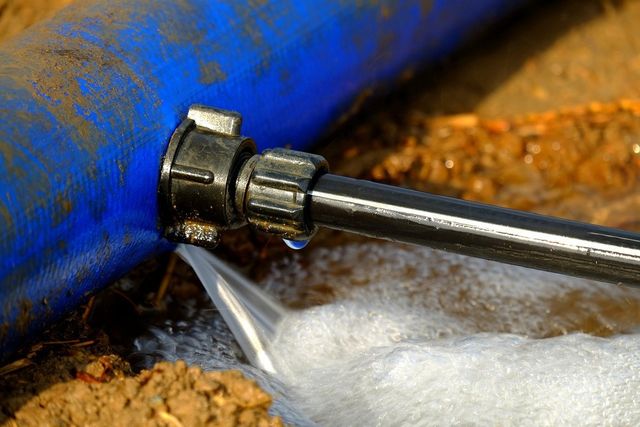We've unearthed this post on Detecting hidden plumbing leaks listed below on the net and decided it made perfect sense to write about it with you on this site.

Early discovery of dripping water lines can alleviate a possible catastrophe. Some little water leaks may not be noticeable.
1. Check Out the Water Meter
Every home has a water meter. Examining it is a surefire way that assists you find leakages. For beginners, turn off all the water sources. Guarantee nobody will certainly purge, make use of the tap, shower, run the cleaning equipment or dishwasher. From there, go to the meter and watch if it will certainly transform. Given that no person is utilizing it, there need to be no activities. That indicates a fast-moving leakage if it relocates. If you find no adjustments, wait a hr or two as well as inspect back again. This suggests you may have a slow leakage that could also be underground.
2. Inspect Water Intake
Assess your water expenses as well as track your water usage. As the one paying it, you must notice if there are any disparities. If you identify sudden changes, in spite of your usage being the same, it implies that you have leaks in your plumbing system. Keep in mind, your water expense ought to drop under the exact same variety each month. An unexpected spike in your costs indicates a fast-moving leakage.
On the other hand, a constant boost every month, even with the same behaviors, reveals you have a slow leakage that's likewise gradually escalating. Call a plumber to extensively check your residential property, especially if you feel a cozy location on your floor with piping underneath.
3. Do a Food Coloring Test
30% comes from commodes when it comes to water intake. Examination to see if they are running effectively. Decline flecks of food shade in the storage tank and also wait 10 mins. If the color in some way infiltrates your bowl during that time without flushing, there's a leak in between the storage tank and also bowl.
4. Asses Outside Lines
Don't neglect to inspect your outdoor water lines also. Must water seep out of the link, you have a loose rubber gasket. One little leakage can squander loads of water and also surge your water costs.
5. Check and also Examine the Scenario
Homeowners need to make it a practice to inspect under the sink counters and also even inside closets for any kind of bad odor or mold growth. These 2 warnings show a leak so prompt attention is needed. Doing regular examinations, also bi-annually, can save you from a major problem.
Examine for stainings and deteriorating as the majority of devices and also pipes have a life span. If you believe dripping water lines in your plumbing system, do not wait for it to escalate.
Early detection of dripping water lines can minimize a potential disaster. Some tiny water leakages may not be noticeable. Inspecting it is a surefire method that aids you uncover leaks. One tiny leakage can waste loads of water as well as increase your water bill.
If you suspect dripping water lines in your plumbing system, don't wait for it to escalate.
WARNING SIGNS OF WATER LEAKAGE BEHIND THE WALL
PERSISTENT MUSTY ODORS
As water slowly drips from a leaky pipe inside the wall, flooring and sheetrock stay damp and develop an odor similar to wet cardboard. It generates a musty smell that can help you find hidden leaks.
MOLD IN UNUSUAL AREAS
Mold usually grows in wet areas like kitchens, baths and laundry rooms. If you spot the stuff on walls or baseboards in other rooms of the house, it’s a good indicator of undetected water leaks.
STAINS THAT GROW
When mold thrives around a leaky pipe, it sometimes takes hold on the inside surface of the affected wall. A growing stain on otherwise clean sheetrock is often your sign of a hidden plumbing problem.
PEELING OR BUBBLING WALLPAPER / PAINT
This clue is easy to miss in rooms that don’t get much use. When you see wallpaper separating along seams or paint bubbling or flaking off the wall, blame sheetrock that stays wet because of an undetected leak.
BUCKLED CEILINGS AND STAINED FLOORS
If ceilings or floors in bathrooms, kitchens or laundry areas develop structural problems, don’t rule out constant damp inside the walls. Wet sheetrock can affect adjacent framing, flooring and ceilings.
https://www.servicemasterbyzaba.com/blog/how-to-detect-water-leakage-in-walls/

Do you appreciate reading up on Leaking water lines? Write feedback directly below. We'd be pleased to see your ideas about this content. We are looking forward to see you back again later on. Do you know somebody else who is truly interested in Finding hidden leaks? Take a moment to promote it. Kudos for your time. Kindly check our website back soon.